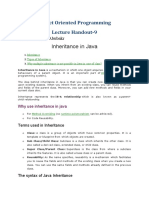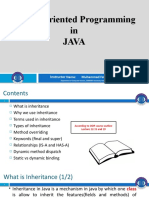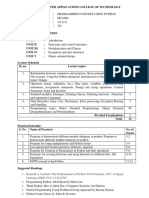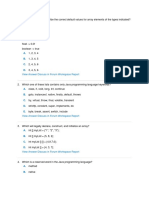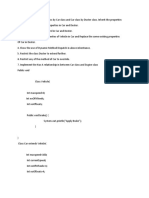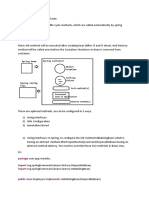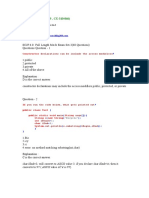0% found this document useful (0 votes)
7 views15 pagesUnit 3
The document covers the concept of inheritance in Java, explaining its types (single, multilevel, hierarchical) and the role of constructors, the super keyword, method overriding, and polymorphism. It provides examples to illustrate how inheritance allows classes to acquire properties and methods from parent classes, enabling code reusability and runtime polymorphism. Additionally, it discusses the syntax and execution order of constructors in relation to inheritance.
Uploaded by
nirajant1Copyright
© © All Rights Reserved
We take content rights seriously. If you suspect this is your content, claim it here.
Available Formats
Download as DOCX, PDF, TXT or read online on Scribd
0% found this document useful (0 votes)
7 views15 pagesUnit 3
The document covers the concept of inheritance in Java, explaining its types (single, multilevel, hierarchical) and the role of constructors, the super keyword, method overriding, and polymorphism. It provides examples to illustrate how inheritance allows classes to acquire properties and methods from parent classes, enabling code reusability and runtime polymorphism. Additionally, it discusses the syntax and execution order of constructors in relation to inheritance.
Uploaded by
nirajant1Copyright
© © All Rights Reserved
We take content rights seriously. If you suspect this is your content, claim it here.
Available Formats
Download as DOCX, PDF, TXT or read online on Scribd
/ 15




